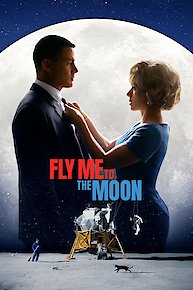
Schmeerguntz
Where to Watch Schmeerguntz

Schmeerguntz is a 1965 avant-garde experimental film created by Gunvor Nelson and Dorothy Wiley. Crafted during the height of the counterculture movement, this cinematic expression serves as a filmic exploration of the status quo, examining societal norms and challenging audience perspectives. Absent traditional narrative arcs or sustained, developed characters, the film plies its means of communication through a kaleidoscopic collection of visuals and scenes strung together with underlying provocative and audacious themes.
The title, 'Schmeerguntz', does not convey a specific meaning and functions to enhance the mystique of the work, underscoring its experimental dimensions. In a variety of ways, it embodies the sentiments of 1960s' rebellion against tradition and societal expectations, specifically from a feminine perspective.
The film maintains an irreverent and disorientating visual style, characterized by rapid montage sequences, collages, manipulated film stock, superimposition, and varying film speeds. In the hands of Nelson and Wiley, the film is not just a medium for storytelling, but itself is a part of the tale, completing the film's idiosyncratic visual statement. The sound design, relying mostly on diegetic sounds, heightens the emphasis on visuals and adds to the film's overall abstract ambience.
At its core, Schmeerguntz is a biting social satire and critique. It is particularly focused on the representation of women and domesticity within popular culture and society at that time. It portrays the often unseen and unglamorous aspects of motherhood and domestic life, effectively deconstructing the illusion of the immaculate, happy housewife frequently depicted in 1960s' television and advertising. The film disagrees with such sanitized versions of reality and stresses the messy, chaotic, and draining side of domestic duties.
Despite its abstract presentation, there's a sense of authenticity and relatability rooted in the film's depiction of the 'everyday'. Viewers can sense a reflection of their own lives in the scattered, fragmented visuals of household chores, childcare, and other mundane tasks, enhancing the impact of its commentary on societal expectations, roles and norms.
An important characteristic in Schmeerguntz is its use of irony and humor to structure its critique. Nelson and Wiley sharply juxtapose glamorous images from beauty pageants, Hollywood films, and advertisements with raw portrayals of household mess and dirt; perfectly coiffed starlets next to harried housewives. The contrast is sometimes shocking, but it’s also effectively humorous. Humor proves a powerful tool for delivering social critique, and Schmeerguntz excels at it.
Notably, the film's chaotic structure, while recognizably deliberate and pointed in its social critique, is also an invitation for multiple interpretations. It works as an inkblot test, with viewers seeing and extracting different meanings and insights based on personal experiences and perspectives.
Despite its experimental format, Schmeerguntz is accessible and its messages resonate deeply. Nelson and Wiley strike a fine balance between the avant-garde and the relatable. It remains a compelling work that reflects not only the time in which it was created, but also timeless issues, thereby maintaining relevance for contemporary viewers.
In addition to standing as a cinematic work of its own, Schmeerguntz also played an influential role in the development of feminist filmmaking and independent cinema in general. It challenged boundaries, brought forth a frankness of feminine existence not often seen in mainstream media, and employed filmic techniques that have since been adopted by future generations of experimental filmmakers.
In conclusion, Schmeerguntz is a pioneering film piece of the 1960s' experimental cinema. It is a profound attack on constraining societal norms and a captivating experiment in the boundaries of cinematic storytelling. Nelson and Wiley created a film that makes you think, question, and see the world in a different way. Schmeerguntz is not just a film to watch—it’s a film to experience and to discuss, demonstrating the power of cinema to inspire conversation and change. Its experimental style, powerful social critique, and humorous undertones ensure that it remains a significant work of art more than half a century after its making.
Schmeerguntz is a Comedy movie released in 1965. It has a runtime of 15 min. Critics and viewers have rated it mostly positive reviews, with an IMDb score of 7.7..


















